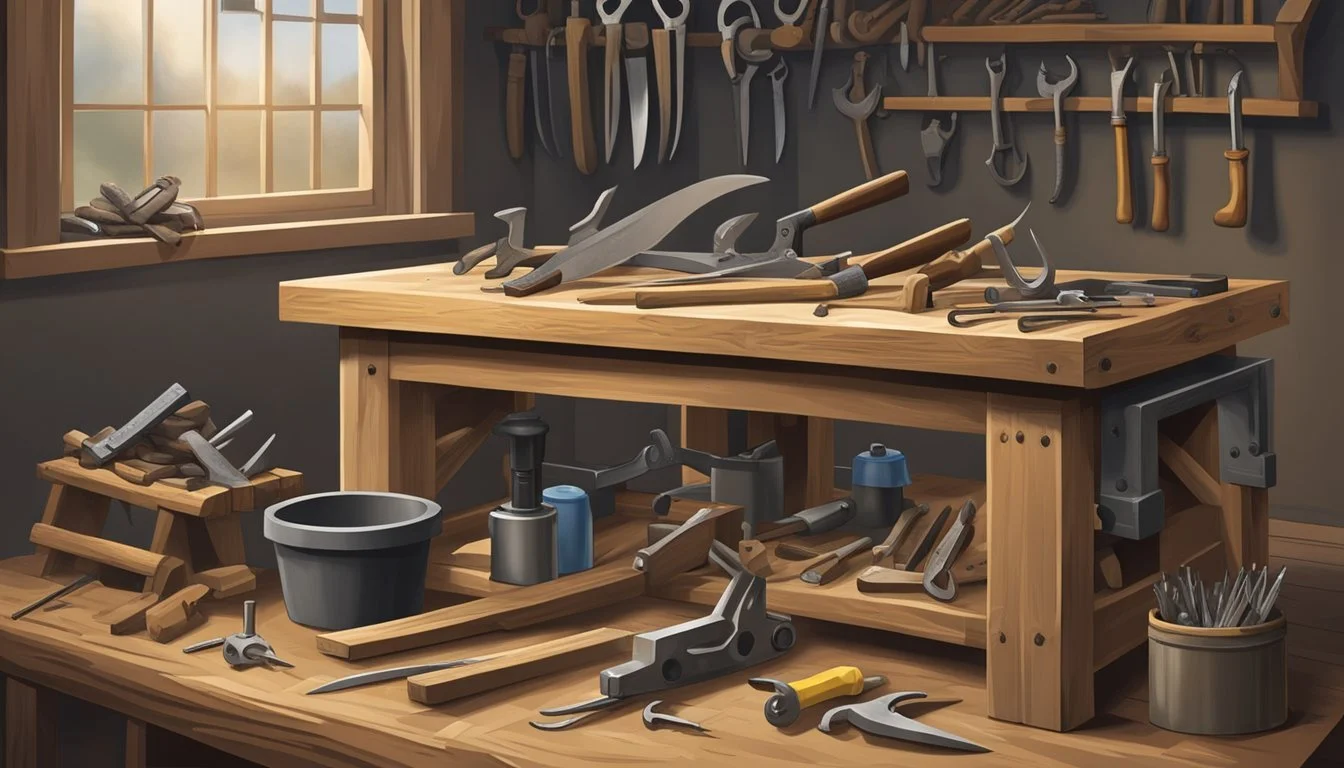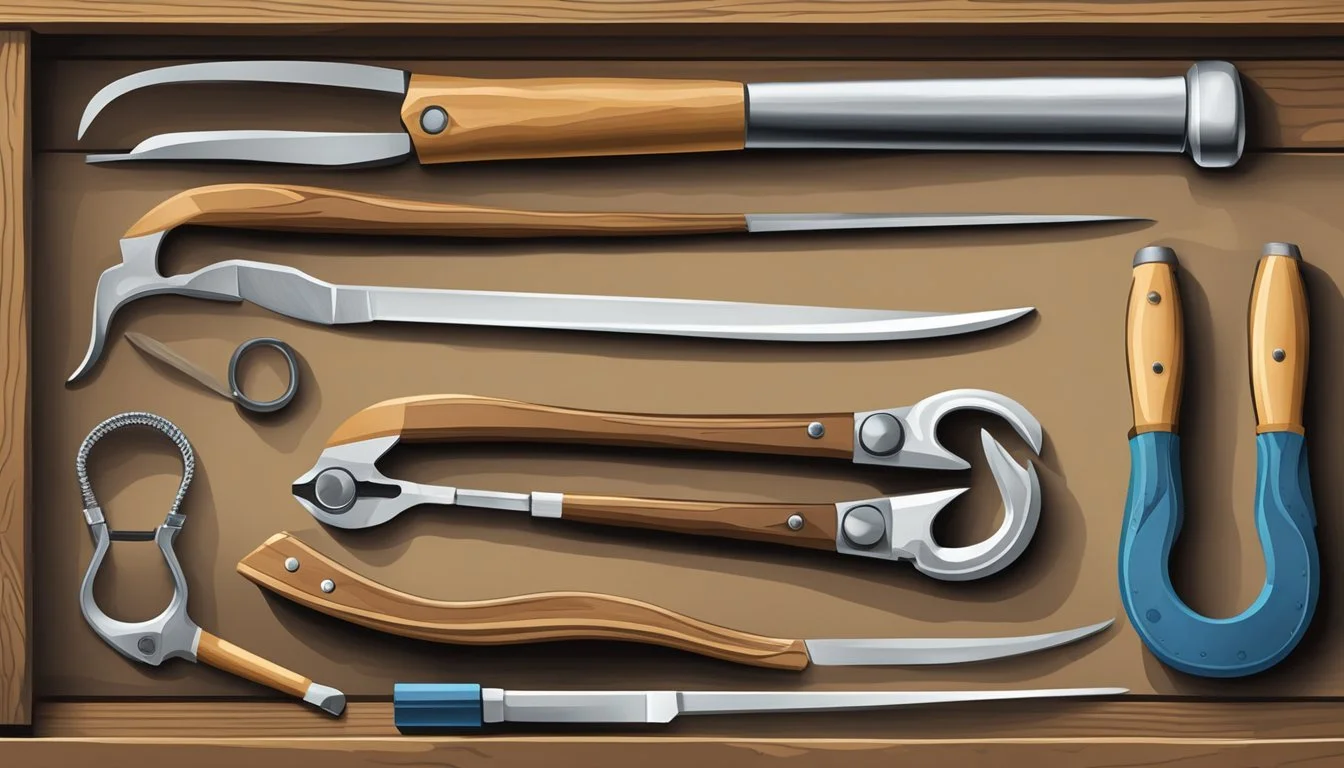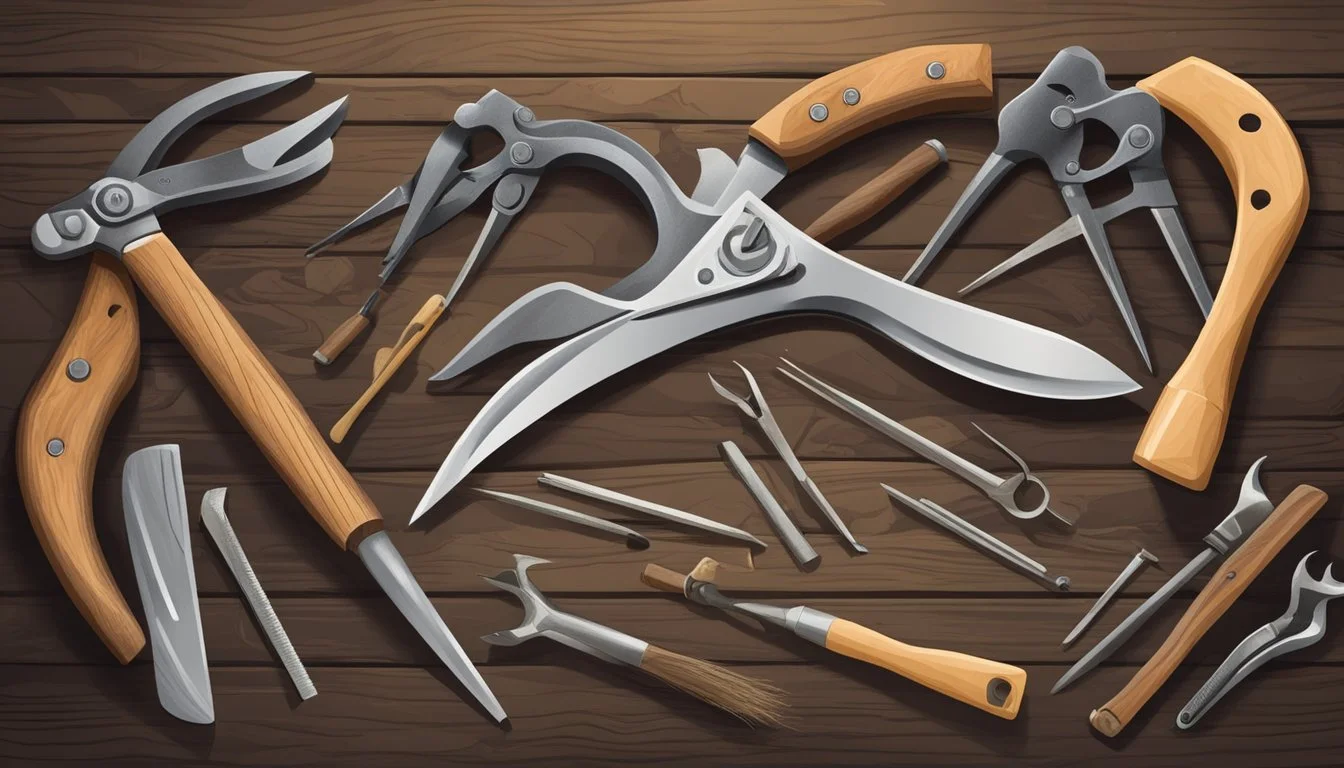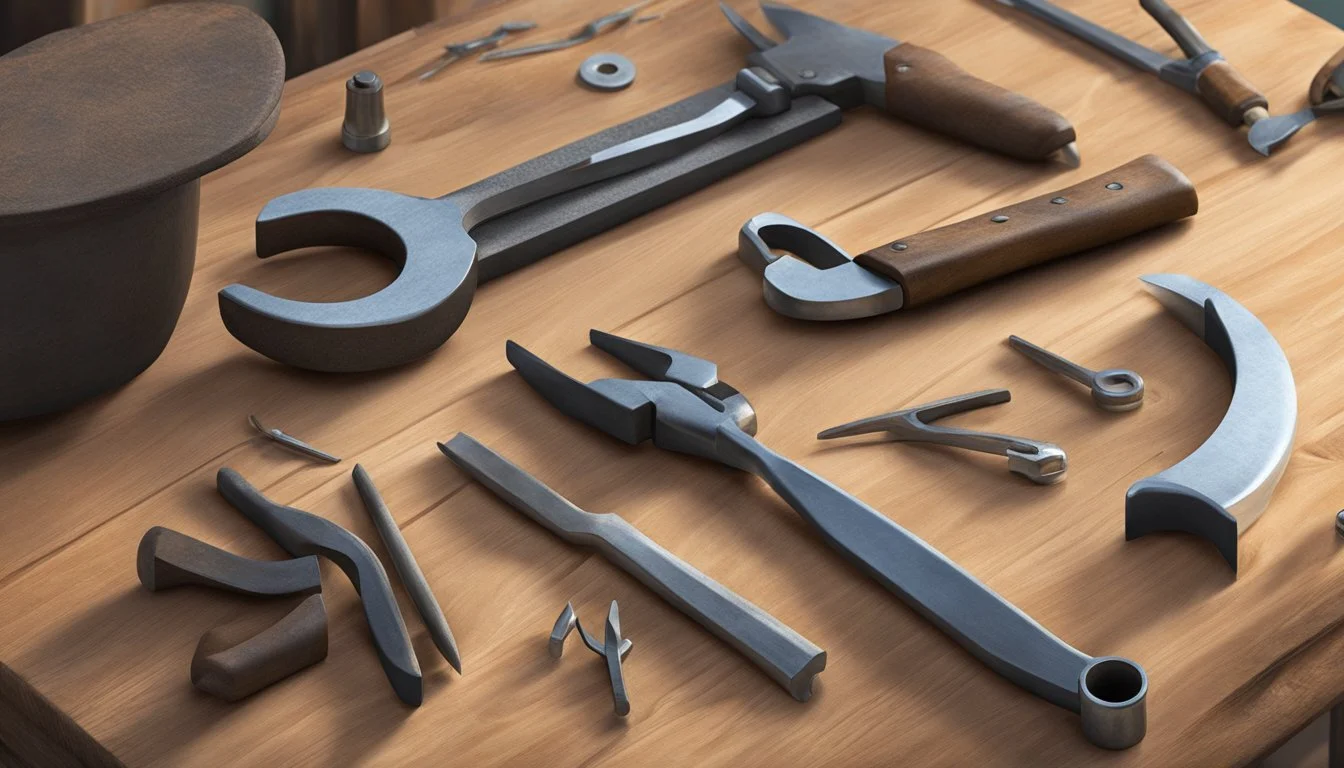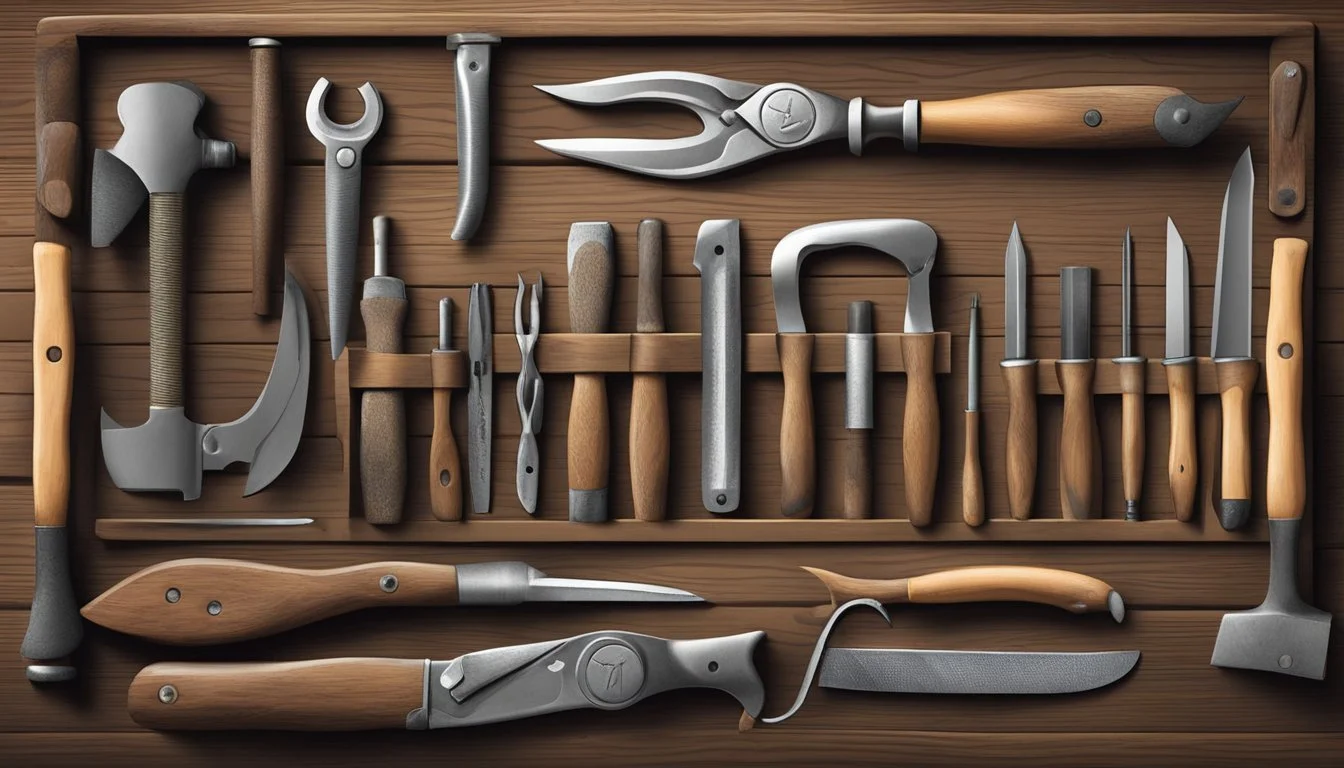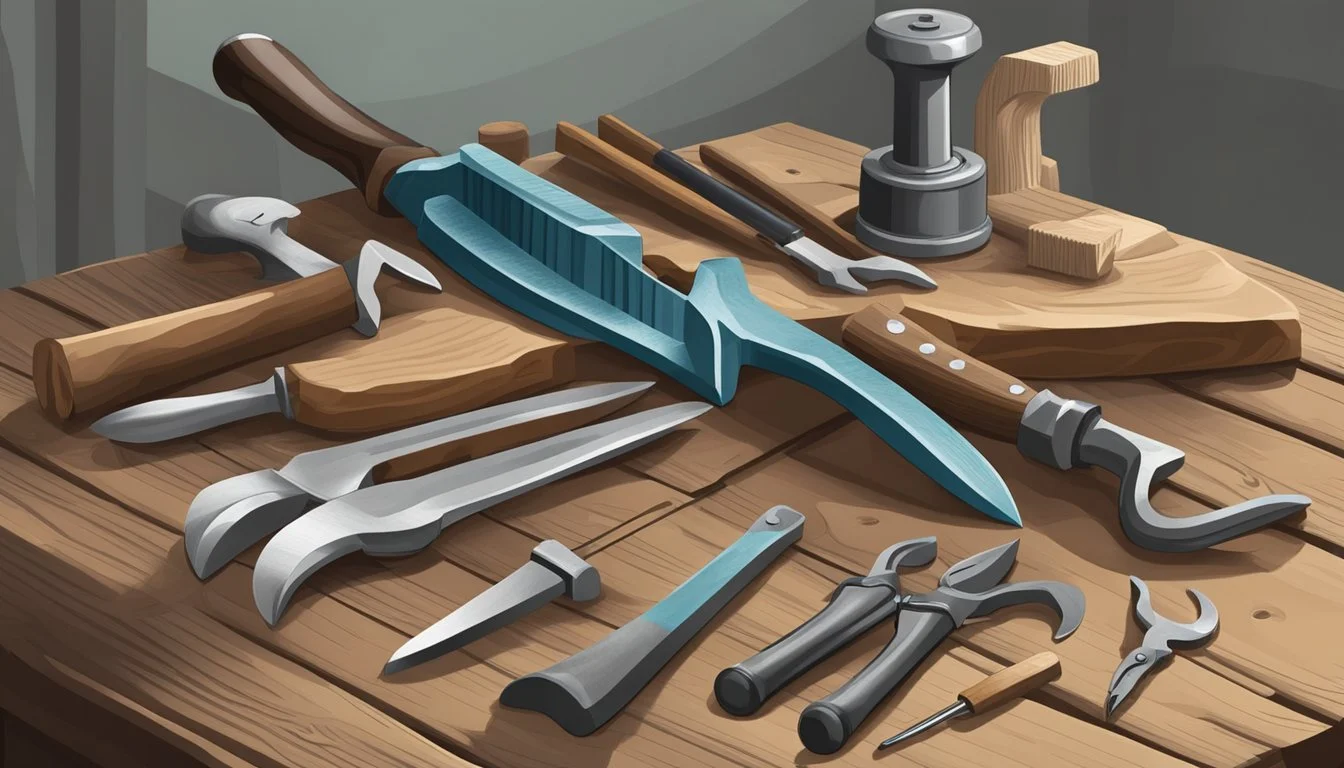The Essential Farrier Tools for Trimming and Shoeing Horses
A Homestead Guide
Proper hoof care is essential for the health and performance of horses, particularly on a homestead where they serve as companions, workers, or athletes. A farrier is a specialist in equine hoof care, including the trimming and balancing of horses' hooves and the placing of shoes on their hooves. The role of the farrier is crucial as they combine skills in blacksmithing and knowledge of equine anatomy to care for horses' feet.
Equipping oneself with the right farrier tools is the first step in ensuring quality hoof care. A hoof knife, hoof nipper, and hoof rasp are indispensable for the trimming process, allowing the removal of excess hoof wall and the ability to shape the hoof efficiently. When it comes to shoeing, tools such as an anvil, a heavy hammer for shaping shoes, and a smaller nail hammer for securing the shoes are needed. Additionally, a nail clincher is used to fold over the nails after they are hammered into the hoof, ensuring the shoe is tightly fixed.
The responsibilities of a horse owner include understanding these tools and the procedures they are designed for, even if the actual work is typically performed by a professional farrier. Keeping these tools on hand and maintaining them can aid in the regular care of horses’ hooves and can also be useful in emergency situations. Their durability and design contribute to the effectiveness of the job, promoting a strong foundation for the equine's overall soundness and well-being.
Understanding the Basics of Farriery
Essential to the upkeep of horse health, farriery involves regular maintenance of hooves and the application of horse shoes when necessary. This process requires a deep understanding of hoof anatomy, recognition of hoof problems and diseases, and an appreciation of the farrier's critical role in equine care.
Anatomy of the Hoof
The hoof is a complex structure with several key components including the hoof wall, sole, frog, and the coronary band at the junction of the hoof and skin. The hoof wall is the hard external surface providing protection, whereas the sole supports the horse's weight. The frog acts like a shock absorber, and the coronary band generates the hoof wall growth. Good hoof health is tied intricately to the integrity of these structures.
Common Hoof Problems and Diseases
Hoof problems can range from minor defects to severe diseases that impact the horse's mobility and comfort. Common issues include:
Cracking: Vertical splits in the hoof wall that can be caused by dry conditions or irregular hoof care.
Thrush: A bacterial infection in the frog characterized by a foul smell and black discharge.
Laminitis: Inflammation of the laminae inside the hoof, leading to severe lameness and pain. It's often related to dietary issues or systemic disease.
Identifying and addressing these problems early is vital for maintaining overall hoof health.
The Role of the Farrier in Horse Health
Farriers are highly skilled professionals specializing in equine hoof care. Their role encompasses:
Trimming: Keeping the hoof in proper shape to prevent uneven wear and potential lameness.
Shoeing: Applying horseshoes to protect the hoof from excessive wear, improve traction, and correct gait abnormalities.
They work closely with veterinarians, especially when treating hoof-related diseases, ensuring a multidisciplinary approach to a horse's health and well-being. The farrier's expertise in hoof mechanics and their relation to the horse's overall limb function makes them indispensable to routine horse care.
Essential Farrier Tools and Equipment
The maintenance of equine hoof health is a crucial aspect of horse care, requiring specific tools for trimming and shoeing. This section breaks down the essential farrier tools and their specialized functions.
Types of Nippers and Their Uses
Nordic "Viking" Polished 15" Hoof Nipper: Primarily used to trim the excess hoof wall, nippers come in various sizes to accommodate different hoof shapes. The Nordic "Viking" is a well-regarded choice for its polished finish and durability, providing a precise cut to maintain the proper length and shape of the hoof.
Understanding Rasp Functions
Heller Excel Legend Farrier Rasp: Essential for shaping and smoothing the hoof after trimming, rasps are dual-sided with coarse and fine textures. The Heller Excel Legend is noted for its capability to balance the hoof surface, correct chips, and resolve cracks effectively, offering a versatile solution in one tool.
Selecting the Appropriate Knives
Farrier knives are indispensable for removing excess sole and trimming frog tissue. The key is to select a knife with a comfortable grip and a sharp, durable blade for clean cuts. The ideal choice is one that allows for precision without requiring excessive force, thereby ensuring a painless experience for the horse.
Hoof Stands, Testers, and Gauges
Hoof Stand: A hoof stand stabilizes the hoof, allowing for meticulous work and reduces strain on both the farrier and the horse.
Hoof Tester: This instrument detects tenderness and potential hoof problems by applying pressure to specific areas.
Hoof Gauge: It is vital to measure hoof angles accurately for a balanced trim or shoe fit, and a reliable hoof gauge ensures consistent results.
Preparing for Trimming and Shoeing
When setting the stage for successful trimming and shoeing, attention to detail is critical. It involves a thorough evaluation of each hoof and the creation of a workspace that ensures safety and efficiency for both the handler and the horse.
Evaluating Hoof Balance and Conformation
A farrier must first assess the hoof's balance and conformation. This involves examining the hoof structure, looking for any irregularities, and determining the natural angle of the hoof. A balanced trim is vital, as it prevents overloading of the limb structures, which can lead to lameness. The farrier looks for symmetry and the correct alignment of the horse's pastern to hoof angle. They consider the overall conformation of the horse, which often informs the trimming process to achieve a balanced hoof.
Setting Up a Safe and Efficient Workspace
Creating an environment for trimming and shoeing demands consideration for both safety and functionality. The workspace should be well-lit and free of clutter, with a secure area to tie the horse. A farrier's toolkit is essential for an efficient job, organized so that the right tool is always within easy reach. The setup should include:
Hoof stand: to support the horse's hoof during work.
Farrier tools: neatly organized, including hoof nippers, rasps, and shoe pullers.
First aid kit: readily available in case of accidental injury.
All safety measures must be in place to prevent accidents, including appropriate restraints for the horse to minimize movement and ensure a calm environment.
The Trimming Process
The trimming process is critical to maintaining hoof health and preventing issues such as cracks and imbalances. A farrier will typically trim the horse's hooves every six to eight weeks to manage growth and maintain the hoof's shape and function.
Step-by-Step Guide to Trimming
Assessment: A farrier starts by assessing the hoof, looking for signs of uneven wear, cracks, and abnormal growth.
Cleaning: They clean the hoof, removing debris and dirt to get a clear view of the hoof structure.
Trimming: Using nippers, the farrier trims away excess growth, maintaining the hoof wall at the correct length.
Leveling: The bottom of the hoof is leveled using a rasp, ensuring that the horse will stand and move correctly.
Beveling: If a bevel is necessary, the farrier will carefully create it to promote a natural roll over the toe during movement.
Caring for the Barefoot Horse
Regular Trimming: Barefoot horses require regular trims to maintain the shape and angle of the hoof and prevent chipping.
Monitoring: Owners should monitor for changes in the hoof and alert the farrier to potential issues such as cracks or discomfort.
Addressing Specific Hoof Shapes and Conditions
Flat Hooves: These hooves demand a careful approach to ensure proper support and weight distribution.
High Angled Hooves: Precision trimming is necessary to prevent undue stress on tendons and ligaments.
Hoof Cracks: A farrier may address minor cracks during the trim to prevent further damage.
Special Conditions: Cases of laminitis or other specific conditions often require a customized trimming approach tailored by the farrier.
A conscientious farrier plays a pivotal role in a horse's overall well-being by delivering expert care through trimming.
Shoeing Techniques and Considerations
The act of shoeing, when performed correctly by a skilled farrier, is essential to maintaining a horse's hoof health and overall soundness. Choosing suitable shoes, adhering to best practices during application, and understanding the role of pads and traction are pivotal for a horse's performance and durability.
Choosing the Right Shoes for the Horse
Selecting appropriate footwear for a horse involves considering the animal's hoof shape, the type of work it performs, and its environment. Horses that work on abrasive surfaces may need shoes that offer more wear resistance, while those in softer, muddier conditions may require shoes that provide better traction. Shoe types can range from standard flat shoes for general purposes to more specialized options such as:
Rim shoes, which have a protruding edge for extra grip.
Bar shoes, which offer extra support for the hoof or a damaged foot.
Slip-on shoes, typically used for temporary protection.
Applying Shoes: Best Practices
The shoeing process must be executed with precision to ensure the horse remains comfortable and the shoes stay in place. Essential steps include:
Cleaning and preparing the hoof, removing any debris and ensuring the hoof is trimmed to an appropriate shape.
Selecting the correctly sized shoe - it should mirror the trimmed hoof's shape.
Positioning the shoe to allow for expansion and growth before it is secure.
Nailing the shoe into place, taking care not to damage sensitive structures of the hoof, and employing shoe pullers as needed for adjustments.
Farriers must carefully shape the shoe to the hoof, using a farrier rasp for precision, ensuring no part of the hoof or shoe causes discomfort.
Pads, Traction, and Specialty Shoeing
Pads can be used between the hoof and the shoe for added cushioning, support, or to correct hoof problems. They come in various types including:
Flat pads, to protect the sole from harsh conditions.
Wedge pads, for adjusting hoof angles.
Frog support pads, to distribute weight more evenly across the hoof.
When dealing with horses that need additional traction, farriers can incorporate traction devices such as studs or borium into the shoeing. Specialty shoeing practices may be necessary for sport horses that are shod at shorter intervals or for those with specific hoof care needs. The goal is always to maintain a healthy hoof structure conducive to the horse's workload and lifestyle.
Aftercare and Maintenance
Proper aftercare following trimming and shoeing, as well as consistent maintenance of your horses' hooves, is critical to ensuring their long-term health and soundness. Close monitoring and a well-maintained schedule for farrier visits can prevent lameness and are pivotal for the prosperity of horses on your homestead.
Post-Trimming and Shoeing Care
After a farrier visit, one should examine the horse's hooves to ensure there are no immediate signs of discomfort. A horse's hooves might need cleaning to remove any leftover debris and checking to make sure the shoes are securely fitted. Observing the horse's gait post-trimming or shoeing can help detect any irregularities early on.
Creating a Regular Schedule for Farrier Visits
Establishing a consistent schedule is key to maintaining hoof health. Regular trimming and shoeing can largely prevent hoof-related issues. The appropriate interval between farrier visits can vary, but typically ranges anywhere from 4 to 8 weeks, depending on the horse's needs and the rate of hoof growth.
Monitoring for Signs of Lameness or Discomfort
Owners should remain vigilant for signs of lameness, which can include an abnormal stance or gait, reluctance to move, or visible hoof discomfort. Early identification and intervention often lead to more successful outcomes. A regular schedule coupled with attentive care enables owners to keep their horses healthy and diminish the risks of lameness.
The Importance of Professional Farriers
Professional farriers play a critical role in the health and performance of horses. With specialized skills in hoof care and shoeing, they ensure equine welfare and contribute significantly to the overall success of performance horses.
Why Skilled Farriers Are Essential
Proficient farriers possess a comprehensive understanding of equine hoof anatomy and biomechanics. The upkeep of a horse’s hooves by a skilled professional is paramount as improper trimming and shoeing can lead to pain, lameness, and long-term health issues. Professional farriers carefully evaluate the condition of the horse's hooves and execute precise trimming, balancing the hoof, which can directly influence the animal's gait and comfort. The essence of their work lies in:
Accuracy: Ensuring proper alignment and balance with each trim.
Preventive Care: Preventing hoof-related complications through regular maintenance.
Problem-solving: Addressing existing issues such as chips, cracks, and imbalance with expert interventions.
The Farrier as an Integral Part of the Equine Care Team
A professional farrier is a key member of the equine care team, collaborating closely with veterinarians, trainers, and horse owners. Their role is essential in:
Interdisciplinary Communication: Sharing critical observations about hoof health that may indicate broader health concerns.
Performance Maintenance: Customizing shoeing techniques to support the unique needs of performance horses, which is instrumental in ensuring peak athletic capability.
Optimal Welfare: Providing regular hoof care that safeguards the horse against discomfort and injury, thereby upholding the highest standards of animal welfare.
Continued Education and Training for Farriers
Farriers are committed to lifelong learning to hone their craft and stay abreast of advances in equine hoof care. Continued education and training represent:
Innovation Adoption: Integrating the latest techniques and materials for improved outcomes.
Certification and Skill Advancement: Through workshops and certifications, farriers demonstrate their commitment to excellence and proficiency in their trade.
Contribution to the Field: Experienced farriers often share their knowledge, enhancing the overall quality of farriery and influencing new generations of professionals.
In summary, the health, performance, and welfare of horses greatly depend on the services provided by professional farriers. Their expertise in the biomechanical complexities of the hoof and their dedication to ongoing education make them indispensable to the equine industry.
Advanced Farriery Tools and Techniques
Advancements in farrier equipment and specialized techniques have reshaped the craft, tailoring to the diverse needs of multiple horses and specific conditions. Professional farriers can now leverage sophisticated gear and expertise to ensure optimal hoof health and performance.
Innovations in Farrier Equipment
Forge and Anvil:
The forge remains critical for shaping metal horseshoes. Modern forges are now portable and more efficient, allowing farriers to work on-site with ease.
An anvil serves as the primary surface for hammering and shaping horseshoes. Recent upgrades have led to anvils with improved ergonomics and materials that reduce the strain on the farrier's arm.
Radiograph Analysis:
Farriers often use radiographs to get detailed images of the hoof's internal structures. This insight allows for more precise shoeing, especially for corrective purposes.
Advanced Shoeing Techniques:
Thermoplastic materials for custom shoes cater to horses with unique hoof problems.
Adhesive technologies have advanced, providing options beyond traditional nailing.
Essential Farrier Tools Updated:
Nippers and Rasps: Precision instruments for trimming ensure a balanced hoof.
Pullers and Clinchers: Refined designs provide better leverage and control.
Working with Multiple Horses and Specific Needs
Farrier Needs Spectrum:
The needs spectrum ranges from routine trimming to custom therapeutic shoeing.
Farriers adjust their approach based on the horse's activity level, hoof condition, and any lameness issues.
Customized Farriery Solutions:
Multiple horses may require a variety of shoe types or trimming techniques tailored to each individual.
A professional farrier must consider the horse's anatomy, biomechanics, and environmental factors when developing a shoeing plan.
Efficiency in Farriery:
Ensuring the health of multiple horses demands efficiency in the use of farriery tools.
Farriers often streamline their process through tool maintenance and adopting multifunctional equipment to keep pace with the demands of larger herds or equine facilities.
Practical Tips for Horse Owners
Ensuring the well-being of your horse's hooves is a critical aspect of equine care. Proper trimming and shoeing are key to preventing hoof problems, and selecting a skilled farrier is as important as maintaining hoof health between visits.
Selecting and Working with a Farrier
When choosing a farrier, horse owners should prioritize experience and qualifications. A proficient farrier will be able to assess the horse’s hoof balance and recognize any underlying issues. Communication is also vital; clear discussions about the horse's activity level and hoof care needs can guide the farrier's approach. Regular farrier visits, typically every 6 to 8 weeks, are essential to maintaining hoof health and catching potential problems early, such as abscesses or thrush.
Dos and Don'ts for Farrier Appointments:
Do: Prepare a clean, well-lit workspace free of obstacles.
Don't: Allow the horse to nuzzle or distract the farrier while working.
Maintaining Hoof Health Between Visits
In between professional farrier appointments, horse owners can take several steps to maintain hoof health. Regularly using a hoof pick to remove debris and checking for signs of thrush or abnormal hoof growth are important practices. Ensuring the hooves are kept dry and clean will help to prevent hoof-related issues, while applying hoof moisturizer can aid in maintaining hoof elasticity.
Basic Hoof Care Checklist:
Daily: Check hooves with a hoof pick for stones and debris.
Weekly: Inspect for signs of abnormal growth or disease.
Monthly: Assess the hoof balance; note any changes in shape or angle.
By following these guidelines, horse owners contribute significantly to the health and soundness of their animals, ultimately enhancing their horses' overall quality of life.

